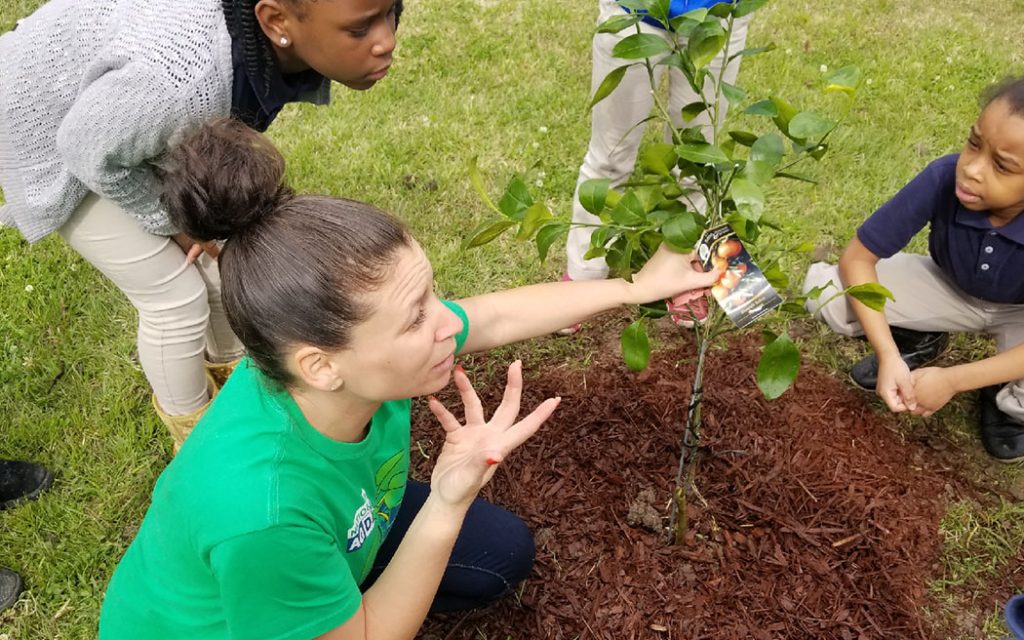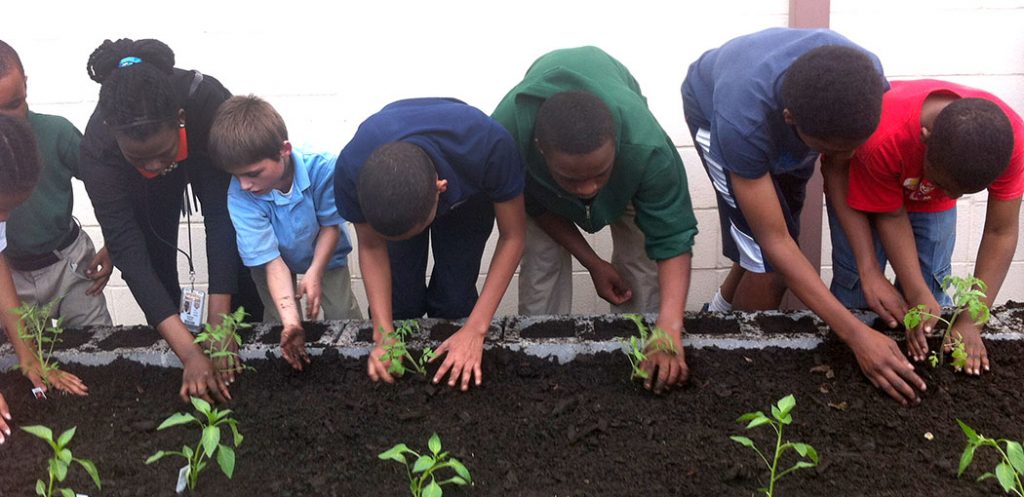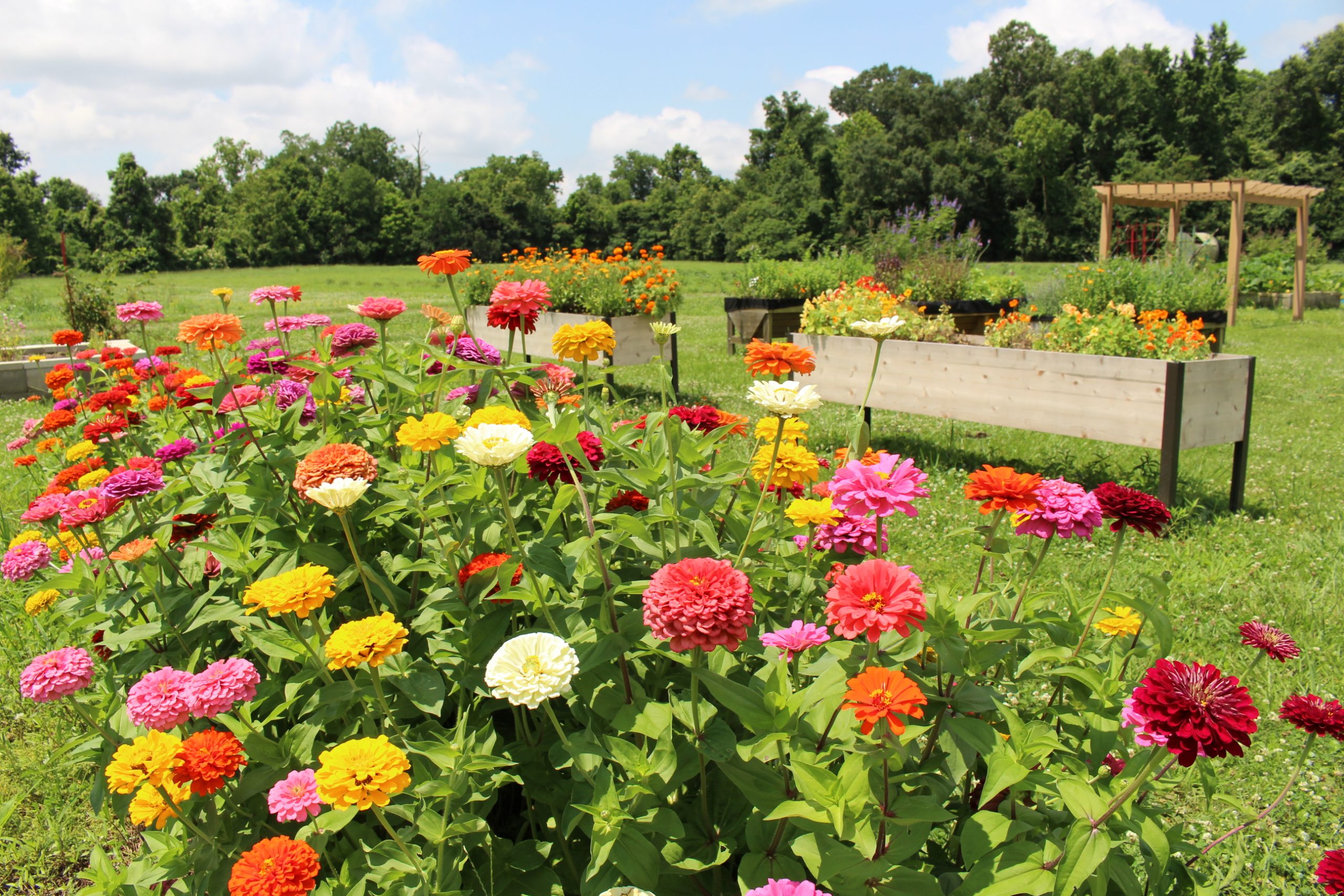Planting a seed: When planting most seeds remember that you plant a seed two times as deep as the seed is big.
- Dig a hole the appropriate depth for the seed. For small seeds, just set them on top of the soil and sprinkle more soil on top of them.
- Place the seed in the hole (two or three seeds can be placed in the hole to ensure that at least one seed sprouts).
- Cover seeds with soil. Act as if it were a small baby that you are tucking in at night, pulling the blanket over it (putting the soil over the seeds).
How to plant a transplant? A transplant is a small plant that has been started indoors and placed in the field/garden when the root ball has formed.
- Dig a hole the appropriate size for the transplant’s root ball to fit in to.
- Place the transplant into the hole with the root ball under the soil and the plant itself outside or above the soil.
- Cover the root ball with soil. The ‘tucking in an infant’ strategy can be utilized for transplants as well.
- Press down firmly with hands carefully around the base of the plant (careful not to harm the plant stem or leaves) and say out loud “Good Night” – remembering to do this ensures all air bubbles are pushed out of the soil and full root-to-soil contact is intact.
- Press down firmly on the soil, that is over the seeds, and say out loud “Good Night.” This ensures that all air bubbles in the soil are pushed out.
- Always water after planting anything!
Row Planting: There is a certain time to plant your garden.
- Check on your garden plan before you start planting and determine where you’re planting what and how much distance there is between the rows for each vegetable.
- Mark the row to be planted and put stakes at either end of the row. Tie a string around one stake and stretch the string to the other stake. Tie this end. This marker will help you keep your rows straight.
- Use the string as a guide in making a shallow trench by dragging the handle of a garden hoe under the string.
- It’s now time to plant your seeds! Drop the seeds in the trench – a couple of inches apart. If the seeds are too tiny to plant one by one, sprinkle them right out the package.
- Place soil gently over the seeds. Remember not to place too much soil over them. Seeds that are planted too deeply won’t sprout. Small seeds should be barely covered. Larger seeds should be planted twice as deep as their diameter.
- Label each row so you will know which vegetables are planted.
- Water your seeds with a small amount of water. Wait for the water to sink into the soil, then add more water.
- When your seedlings have two pairs of leaves, it’s time to thin the plants out. This means, you pull out any plants that are growing too close to each other. If plants are not thinned, the roots will not have room to grow.



